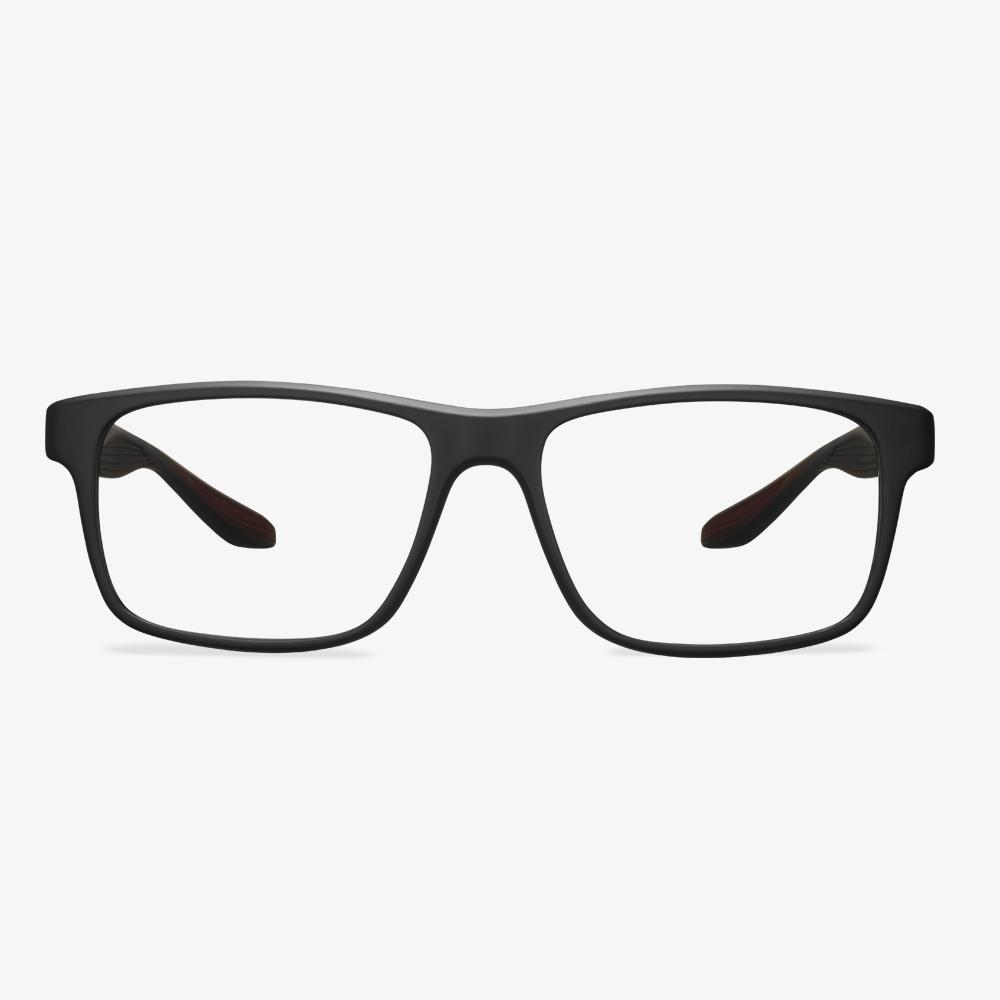The Benefits of Glasses Without Prescription
From the above part, you have found some basic information about glasses without prescription. In this section, we will list some benefits of plain glasses.
The non-prescription glasses are inexpensive, and they are widely available in a selection of styles and shapes. In addition, non-prescription glasses can be easily replaced as fashion changes.
Meanwhile, everything has two different sides. So, there are also some negative voices of glasses without prescription.
Benefits of Blue Light Glasses
In this section, we will show you the benefits of blue light glasses.
- Relieve eye discomfort with blue-light blocking glasses. Excess device usage can lead to computer vision syndrome or digital eye strain. Blue light glasses can enhance your focus and reduce eye strain, resulting in making your eyes feel less tired and improving productivity. Another way to reduce eye strain is to make sure you take regular breaks from the screen.
- Blue light glasses can affect your sleep. Blue light has a high energy frequency that can increase alertness and delay the body’s release of melatonin, which helps induce sleep. In general, you had better not use blue light devices one to two hours before sleep. Blue light glasses can reduce the impact of blue light, enabling you to use your devices before bed and still get a good sleep.
- Blue light glass can help reduce the likelihood of Age-Related Macular Degeneration. AMD is a leading cause of blindness. Blue light blocking lenses can help avoid or delay this condition by preventing blue light from impacting your eyes.
Of course, besides those benefits, there are some other benefits of blue light glasses. For example, blue light glasses can relieve headaches.
The Disadvantages of Trivex Lenses
In this section, we will show you the disadvantages of Trivex lenses.
- Trivex lenses have less availability, especially compared with polycarbonate lenses.
- Trivex lenses cannot provide the same degree of thinness as high-index lenses.
- Trivex lenses are expensive than regular lens materials.
Should I wear glasses all the time for myopia?
Wearing glasses is more to correct your vision and protect your eyes, so as not to worsen myopia. If you are nearsighted but don't wear glasses, it will have a lot of impact on your eyes. First of all, after a person is nearsighted, seeing distant things requires a lot of adjustments to the eyeballs, which will make your eyes tired easily. Over time, your myopia will increase quickly. When we are nearsighted, sometimes the myopia of the two eyes is not the same. If we do not wear glasses and correct vision, this will affect the normal development of vision. The difference between the powers of the two eyes may become larger and larger, which is easy to cause a squint. After myopia, if you want to see far away things clearly, you need to squint your eyes harder to see clearly. Therefore, some nearsighted eyes often squint when they are not wearing glasses. However, the action of squinting will cause the upper eyelid to form a pressure on the eyeball, and squinting for a long time can easily cause amblyopia. Squinting your eyes for a long time will also make your eyes smaller and affect your appearance. Therefore, once your myopia exceeds 200 degrees, you must wear glasses in time.
The glasses are too loose or too tight at the temple.
If your glasses are too tight on your temples, you will feel uncomfortable. On the other hand, if your frames are too loose, it can make you look not energetic. Either way, you can adjust the frames at home to make them more comfortable. If the arm squeezers your temples. If the frames are metal, hold your lenses in place with your less-used hand. Use your dominant hand to gently press outwards on the corner of the frame, between the hinge of the frame and the lens. Repeat this step on the other side of your body to make your temples looser. If the frame is too loose from the temple. Again, for metal frames only, use the same method as you used to relax the frames, but apply slightly inward pressure on the corner between the hinge and the lens. Repeat on the other side, tightening the fit around the temple. Adjusting the temples of rimless, half-rimless, or plastic frames can break them. You are advised to take these frames to the optical shop for adjustment.
Design principle of progressive multifocal lens
For the same piece of the lens, the top is used to see far, the bottom is used to see close. The upper and lower degrees are different.
There is not a sudden change in the distance degree fixed above the lens to the near degree fixed below the lens, but a gradual transition between the two through gradual changes in refractive power, which has special benefits over common bifocals or trifocal lenses.
What is the progressive multifocal lens?
The lens of progressive multifocal glasses can change the refraction of the lens at the upper part of the central channel of the line of sight, which can effectively solve the difference of refraction when people view objects at different distances from long, medium, and short distances. Depending on demand, people have the flexibility to change or compensate vision according to visual distance, making it easier to help to adjust your vision in a variety of situations.











































